Discover 20 hidden attractions, cool sights, and unusual things to do in Quito (Ecuador). Don't miss out on these must-see attractions: Carondelet Palace, El Panecillo, and Basílica del Voto Nacional. Also, be sure to include Church of la Compañía de Jesús in your itinerary.
Below, you can find the list of the most amazing places you should visit in Quito (Pichincha).
Table of Contents
Carondelet Palace
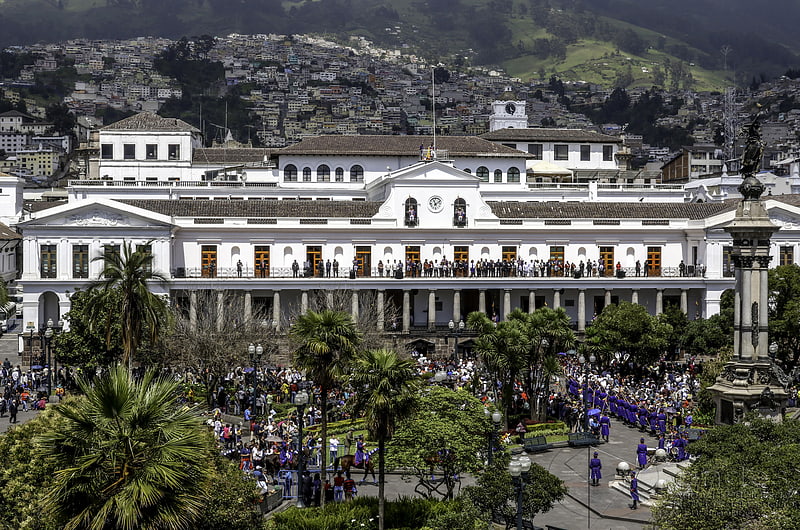
Also known as: Palacio de Carondelet
Palace in Quito, Ecuador. Carondelet Palace is the seat of government of the Republic of Ecuador, located in Quito. Access is by the public space known as Independence Square or Plaza Grande, around which are also the Archbishop's Palace, Municipal Palace, Hotel Plaza Grande, and Metropolitan Cathedral.[1]
El Panecillo
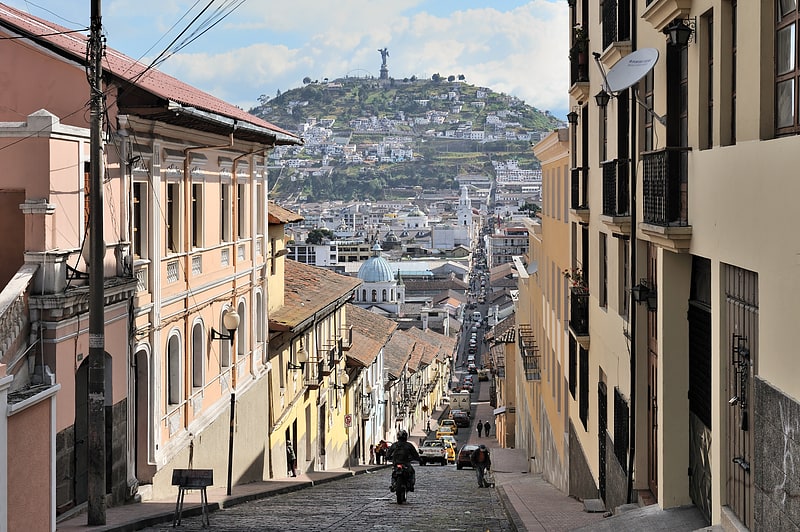
Hill in Ecuador. El Panecillo is a 200-metre-high hill of volcanic-origin, with loess soil, located between southern and central Quito. Its peak is at an elevation of 3,016 metres above sea level. The original name used by the aboriginal inhabitants of Quito was Yavirac. According to Juan de Velasco, a Jesuit historian, there was a temple on top of Yavirac where the Indians worshiped the sun until it was destroyed by the Spanish conquistadores. The street that leads up to El Panecillo is named after Melchor Aymerich.[2]
Address: Costado del Centro Historico, 170150 Quito (Centro Histórico)
Basílica del Voto Nacional
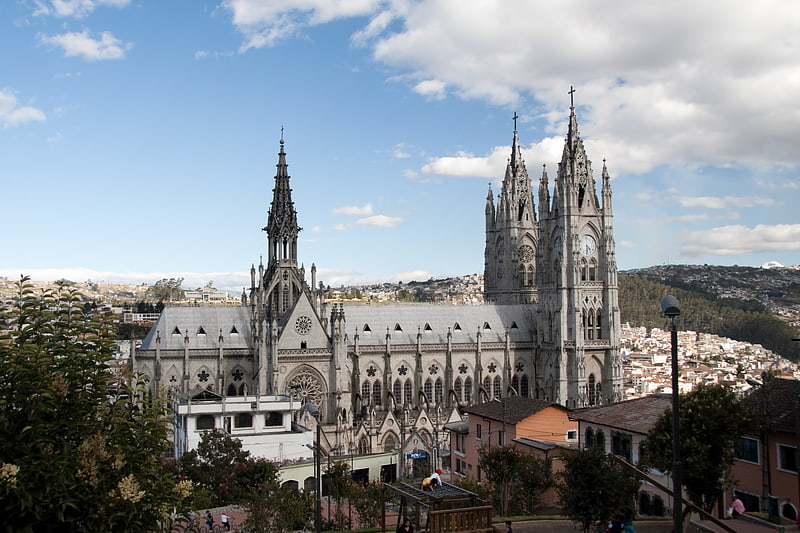
Catholic church in Quito, Ecuador. The Basilica of the National Vow is a Roman Catholic church located in the historic center of Quito, Ecuador. It is the largest neo-Gothic basilica in the Americas.[3]
Address: Carchi 122, Quito (San Juan)
Church of la Compañía de Jesús
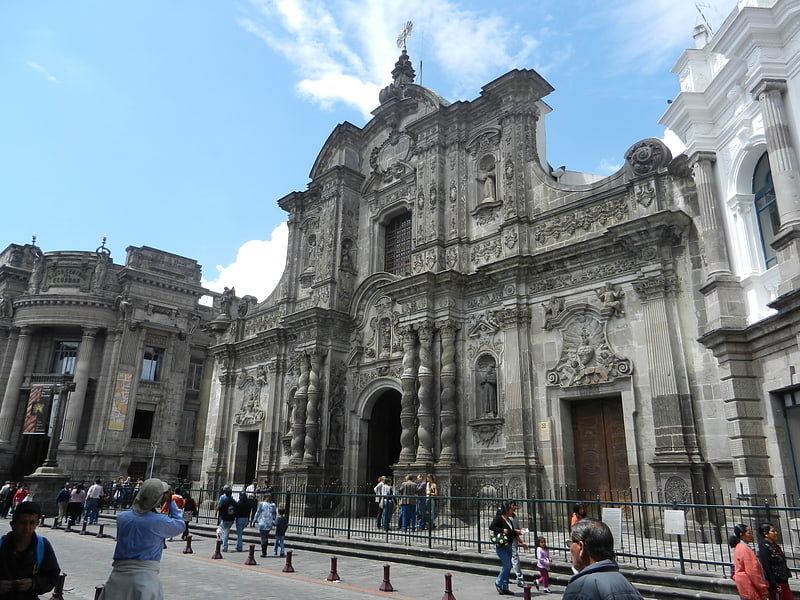
Catholic church in Quito, Ecuador. The Church and Convent of San Ignacio de Loyola de la Compañía de Jesús de Quito, also known in the Ecuadorian people simply as La Compañía, is a Catholic clerical complex located on the corner formed by calles García Moreno and Sucre, in the Historic Center of the city of Quito, capital of Ecuador. The façade of its main temple is entirely carved in volcanic stone. Over time, this church has also been called: "Temple of Solomon of South America". Father Bernardo Recio, a traveling Jesuit, called it "Golden Ember".
The complex includes the Residencia San Ignacio, "Mother House" of the Jesuits in Ecuador. During colonial times, this "Jesuit block" housed the Seminario San Luis, the Colegio Máximo, the University of San Gregorio Magno and the Mainas Missions Office. Since 1862, the Colegio San Gabriel functioned on the block.
The church, and its rich internal ornamentation, completely covered with gold sheets, is one of the main tourist attractions in the city and an invaluable heritage, both artistic and economic, for the country. It was visited by Pope John Paul II, who presided over a mass in the church on January 30, 1985, within the framework of his three-day visit to Ecuador. It was also visited by Pope Francis on July 7, 2015, who prayed there before the image of Our Lady of Sorrows.[4]
Address: Garcia Moreno, 170401 Quito (Centro Histórico)
Pichincha Volcano
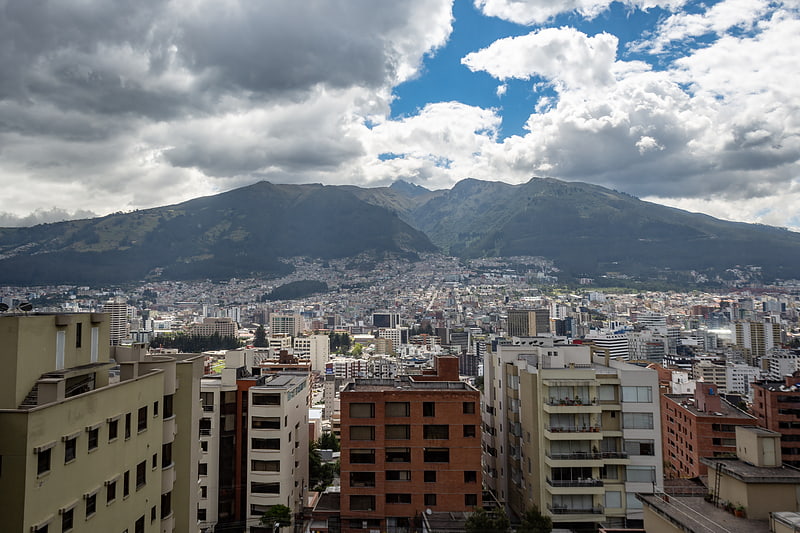
Also known as: Volcán Pichincha
Stratovolcano in Ecuador. Pichincha is a stratovolcano in Ecuador. The capital Quito wraps around its eastern slopes.
The two highest peaks of the mountain are Wawa Pichincha (Kichwa wawa child, baby / small, Spanish spelling Guagua Pichincha) (4,784 metres (15,696 ft)) and Ruku Pichincha (Kichwa ruku old person, Spanish Rucu Pichincha) (4,698 metres (15,413 ft)). The active caldera is in Wawa Pichincha on the western side of the mountain.[5]
Church and Convent of St. Francis
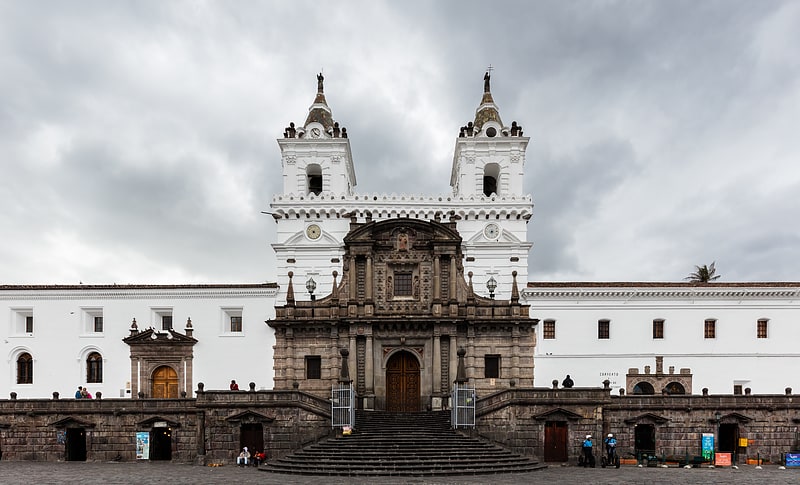
Also known as: Iglesia de San Francisco
Catholic church in Quito, Ecuador. The Basilica and Convent of San Francisco, commonly known as el San Francisco, is a Catholic basilica that stands in the middle of the historic center of Quito, in front of the square of the same name. The structure is the largest architectural complex within the historic centers of all of South America, and for this reason it was known as "El Escorial of the New World". San Francisco is considered a jewel of continental architecture for its mixture of different styles combined throughout more than 150 years of construction. San Francisco is part of the UNESCO World Heritage Site "City of Cusco".
On its three and a half hectares of surface, thirteen cloisters have been built (six of them of great magnitude), three temples, a large Atrium, adding approximately 40,000 square meters of construction. Multiple activities are currently carried out there: conventual and religious, public care in the areas of health, communication, education and others of a popular nature that keep the building active.
Inside the church there are more than 3,500 works of colonial art, of multiple artistic manifestations and varied techniques, especially those corresponding to the Colonial Quito School of Art, which was born precisely in this place. It also has a Franciscan library, described in the 17th century as the best in the Viceroyalty of Peru.
The complex is preceded by the Plaza de San Francisco that for years supplied the city with water from its central fountain, and which has functioned as a popular market, as a space for military and political concentrations, and as a meeting place and social recreation. The concave-convex staircase that connects the square with the Atrium, which highlights the Mannerist-Baroque facade of the main building, is considered of great architectural importance in the Colonial Americas.[6]
Quito Astronomical Observatory
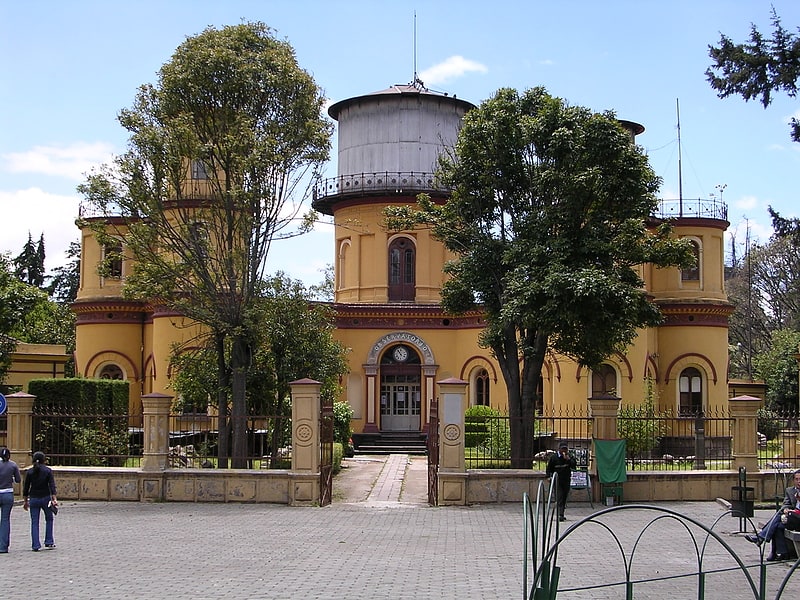
Also known as: Observatorio Astronómico de Quito
National historical institute in Quito, Ecuador. The Quito Astronomical Observatory is a research institute of EPN, the National Polytechnic School in Quito, Ecuador. Its major research fields are astronomy and atmospheric physics.
The Quito Astronomical Observatory is one of the oldest observatories in South America and was founded in 1873. In 1963, The Government of Ecuador transferred title of the Observatory to the National Polytechnic School. The Quito Astronomical Observatory is the National Observatory of Ecuador and is located 12 minutes south of the Equator in the Historic Center of Quito.[7]
Address: Av. Gran Colombia S/N, 170150 Quito (Itchimbía)
Cathedral of Quito
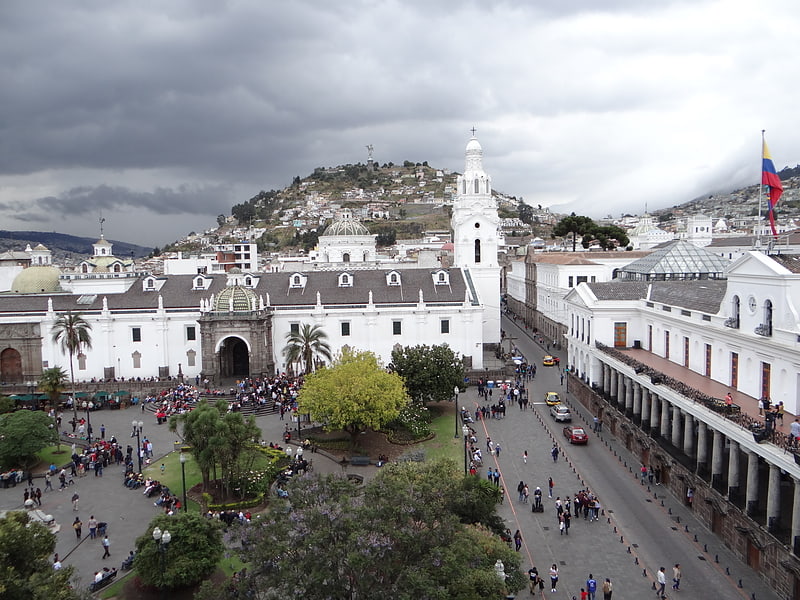
Also known as: Catedral metropolitana de Quito
Cathedral in Quito, Ecuador. The Quito Metropolitan Cathedral, known simply as la Catedral, is the Catholic cathedral in Quito, Ecuador. Located on the southwestern side of the Plaza de la Independencia, it served as a seat of the Diocese of Quito from 1545 until 1848 when it was elevated to Archdiocese. In 1995, it was elevated to the Cathedral of Ecuador, making it the seniormost Catholic church in the country.[8]
Address: Venezuela y Espejo, Quito (Centro Histórico)
Plaza de la Independencia
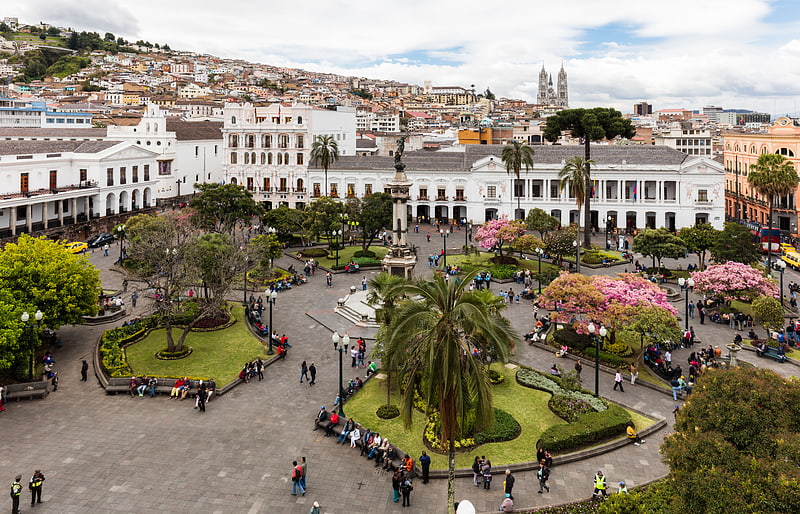
Independence Square is the principal and central public square of Quito, Ecuador. This is the central square of the city and one of the symbols of the executive power of the nation. Its main feature is the monument to the independence heroes of August 10, 1809, date remembered as the First Cry of Independence of the Royal Audience of Quito from spanish monarchy. The square is flanked by the Carondelet Palace, the Metropolitan Cathedral, the Archbishop's Palace, the Municipal Palace and the Plaza Grande Hotel.
The square is surrounded by the following four streets: Calle Venezuela (east), Calle Chile (north), Calle Gabriel García Moreno (west) and the pedestrian segment of Calle Eugenio Espejo (south).[9]
Iglesia de El Sagrario
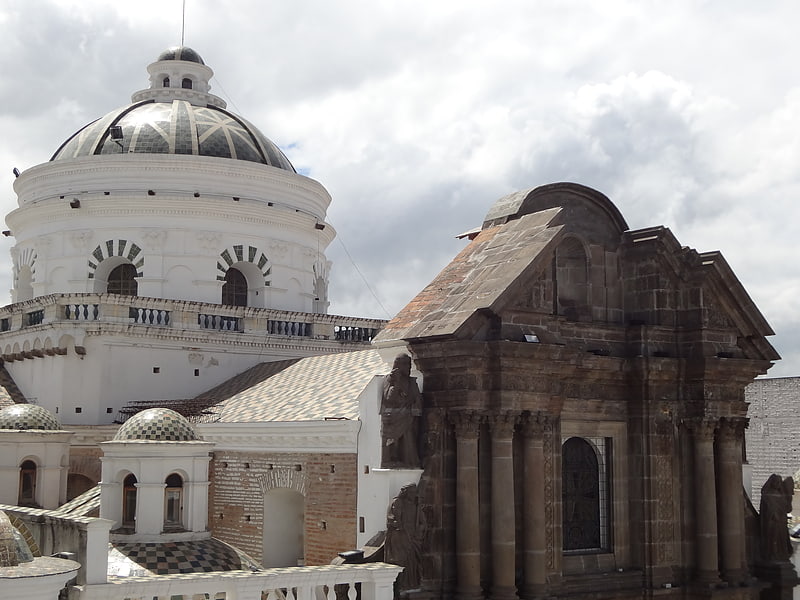
Catholic church in Quito, Ecuador. La Iglesia de El Sagrario is a large 17th-century chapel in Quito, Ecuador. It is adjacent to, and attached to, the 16th-century Quito Cathedral, but is generally accessed separately. It is located in the historic center of the city, on Calle Garcia Moreno, a few meters from the corner of Calle Eugenio Espejo. It is a part of the whole of the Cathedral complex, although it seems more an independent church than an attached chapel, both due to its size and to its importance in the Quiteño imagination.
Work on the foundation began in 1617 and the structure was built on a series of arches which overtopped and closed off the old Gorge of Zanguna (Quebrada de Sanguña or Zanguña). The façade was completed in 1706 and the remainder of the building in 1715. Between 1731 and 1747 the altarpieces of the interior were emplaced.
In El Sagrario is the mausoleum dedicated to Marshal Antonio José de Sucre, hero of Ecuadorian and Latin American independence, who had requested to be interred in his beloved Quito. (The urn containing his remains is carved from dark Pichincha andesite and all around are arranged the flags of all the countries whose freedom he secured. Here too Luis Mideros has highlighted the historical facts of the "Hero of Pichincha" in murals.)
The most important work of art in El Sagrario is the sculpture ensemble known as La Sábana Santa ("The Holy Shroud") by Manuel Chili (Caspicara), which is in the retrochoir.[10]
Address: Gabriel Garcia Moreno y Espejo, 170150 Quito (Centro Histórico)
Botanical Gardens
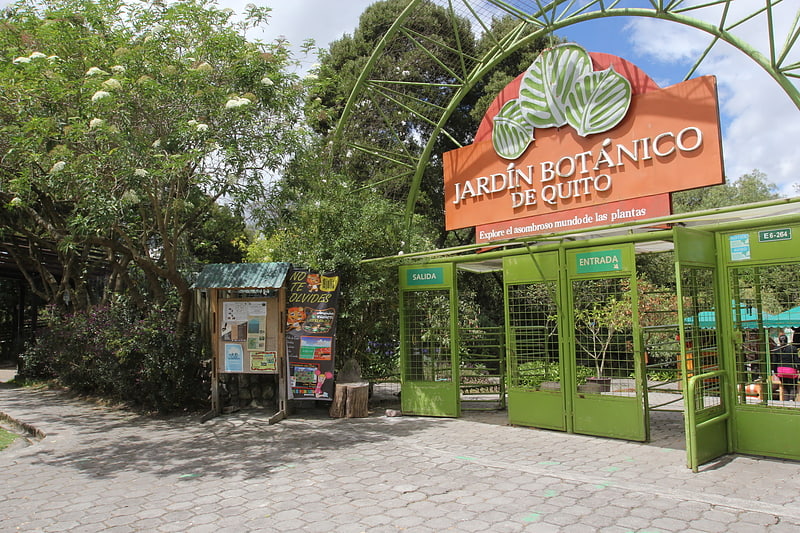
Park in Quito, Ecuador. Quito Botanical Garden is a park, botanical garden, arboretum and greenhouse s of 18,600 square meters that it is planned to increase, it houses species of plants of the country, which is found in the city of Quito, Ecuador. The identification code of the Botanical Garden Quito as a member of the Botanic Gardens Conservation International, as well as the initials of its herbarium is QUITO.[11]
Address: Parque Carolina, 170150 Quito (Iñaquito)
Quito Ecuador Temple
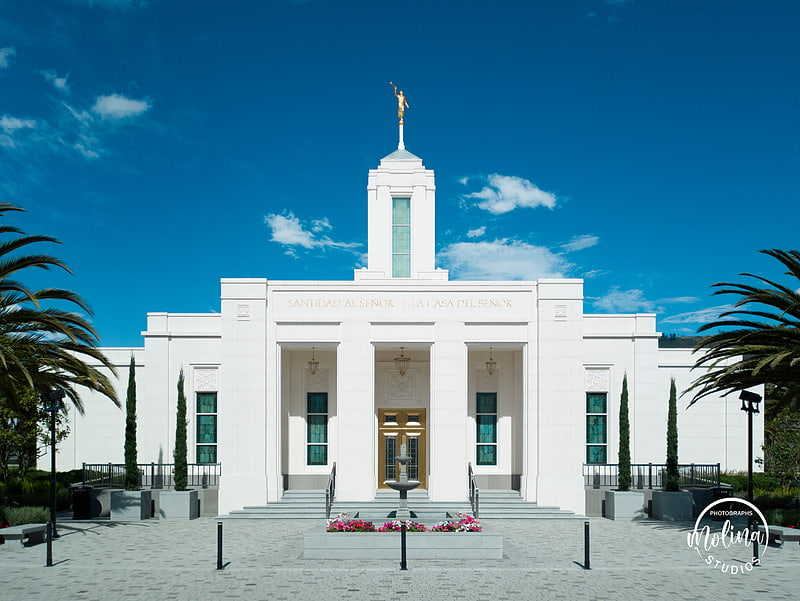
Church of jesus christ of latter-day saints in Quito, Ecuador. The Quito Ecuador Temple is a temple of The Church of Jesus Christ of Latter-day Saints under construction in Quito, Ecuador.[12]
Address: Avenida Velasco Ibarra, Quito (Chimbacalle)
Alberto Mena Caamaño Museum

Also known as: Museo Alberto Mena Caamaño
Alberto Mena Caamaño Museum is a museum in Quito, Ecuador. A cultural institution of Quito, the capital of Ecuador, it is located in the historic center of the city, next to the Palacio de Carondelet. The Rough Guide to Ecuador considers it to be the "old town's most rewarding museum".
It was created by ordinance on May 28, 1957, following a donation from the aristocratic philanthropist Alberto Mena Caamaño. The donation included more than 600 objects including paintings, sculptures, archaeological pieces, weapons and miscellaneous items. After a restoration of the former Royal Barracks building, the museum opened to the public on November 3, 1959. In 1970 a permanent exhibition hall was added on a theme of the slaughter which occurred on August 2, 1810, when 200 citizens were killed in the barracks and the surrounding streets of Quito by royalist troops. It is depicted by wax figures of the artist Francisco Barbieri. In 1987 the museum had to close its doors due to minor damage to the building structure, as a result of the earthquakes that rocked Quito that year. Finally, on November 27, 2002, it reopened following extensive restoration.[13]
Capilla del Hombre
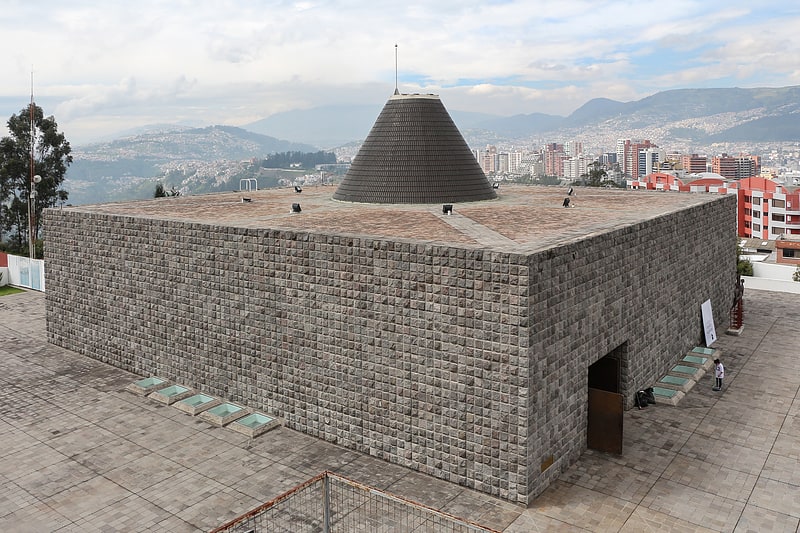
Museum in Quito, Ecuador. The painter Oswaldo Guayasamín's La Capilla del Hombre occupies a site in Bellavista overlooking the city of Quito, Ecuador. The Capilla is a purpose-built art museum dedicated to the peoples of Latin America. Construction of Guayasamín's masterpiece began in 1995 and unfortunately was not completed until 2002, after his death.
Although this chapel contains fewer pieces of Guayasamín's art than the nearby foundation and museum, the building provides an atmosphere specific to his artwork to view his paintings. The Capilla del Hombre exhibits Guayasamín's work as a history of human suffering and violence in Latin America and the world. It includes sculptures and murals and integrates the surroundings into an artistic interpretation of the subject. The building was co-designed by Oswaldo Guayasamín and Handel Guayasamín.[14]
Address: E18-94 Mariano Calvache St. And Lorenzo Chavez St, 170150 Quito (Iñaquito)
Museo de la Ciudad
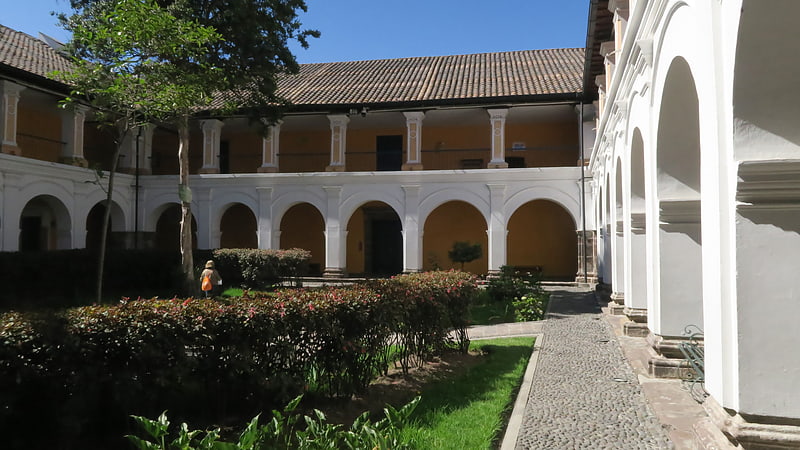
Museum in Quito, Ecuador. The City Museum is a museum in the colonial center of Quito, Ecuador. It is located on Garcia Moreno Street, between Morales and Rocafuerte.
The museum was founded in 1998 and occupies the buildings of what once was the San Juan de Dios Hospital. The buildings were designated as a UNESCO Cultural World Heritage Site. and were restored in 1995 using the same materials as the original buildings to repair damaged areas. Ancient stone Doric columns, stone doorways and stone coverings in the patios are a highlight of the architecture.
The museum chronicles the history of Quito, along with 400 years of the history of the hospital. The former hospital buildings include an area of 10,200 square meters which house the four museum collections, 10 exhibition halls, workshop areas and museum offices, arranged around four courtyards. In addition to its permanent collections, the museum also offers the temporary exhibitions, focusing on particular aspects of life in Quito.
In July 2020, a collection of 69 artifacts were privately restituted to Ecuador to be displayed and appreciated at the museum. The objects were first taken from Ecuador by a London diplomat in the 1960s who was an art and archaeology enthusiast. The objects in his collection include Catholic icons from the era of the Spanish conquest and objects thought to date to the Pre-Columbian era.
One of the permanent exhibitions offers a journey through the customs, people and traditions of Quito, through its displayed history from the sixteenth century to the nineteenth century. Another is the display of the history of the hospital and a collection of items from a former doctor at the hospital. There is another permanent exhibit which is called "A new social order breaks through: Quito nineteenth century".
The museum is open Tuesday to Sunday, from 09:30 until 17:30. Admission is free for people with disabilities, certain institutions and municipal employees. Admission for the general public requires minimal fees.[15]
Address: Garcia Moreno 572 y Rocafuerte, 170150 Quito (Centro Histórico)
La Carolina Park

Also known as: Parque La Carolina
Park in Quito, Ecuador. Parque La Carolina is a 165.5-acre park in the centre of the Quito central business district, bordered by the avenues Río Amazonas, de los Shyris, Naciones Unidas, Eloy Alfaro, and de la República.[16]
Address: Av. de los Shirys & Av. Rio Amazonas, Quito (Iñaquito)
Itchimbía
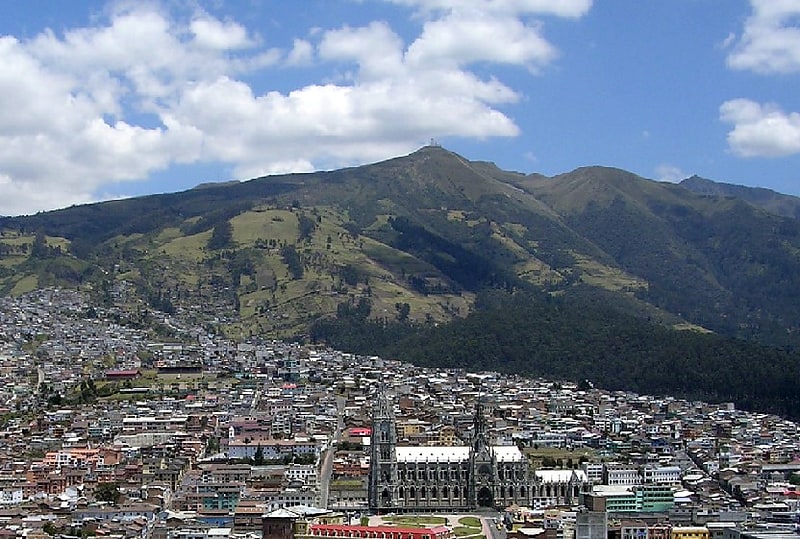
Itchimbía is a hill in Quito, Pichincha Province, Ecuador. It is surrounded to the east by Machángara River, a river that originates in the southern part of the city of Quito. Itchimbía is on the eastern/northeastern border of the center of the city of Quito and the southeast border of the northern part.
Towards the west Itchimbía is connected to the hill of San Juan neighborhood, a neighborhood between central and northern Quito. Just west of the Itchimbía hill lies La Alameda, one of the largest parks inside the city of Quito, and in which there is an old astronomical observatory simply known as Observatorio Astronómico de Quito (OAQ). The observatory is nowadays owned by Escuela Politécnica Nacional (EPN). On the southwest there is also the Iglesía de San Blas, one of the better known historical churches of the center of Quito. To the south there is a creek that runs across the center of the city and whose water flows into Machángara River.
On the hill there is a park known as Parque Itchimbía or Parque del Itchimbía, which was previously owned by the municipality but is now run by a private environmentalist corporation known as Consorcio Ciudad-Ecogestión. The park includes a glass house atop the hill which serves as an exhibition center, conference room and museum and is known as es:Centro Cultural Itchimbía. The exhibition center is owned by Centro Cultural Metropolitano de Quito. Benjamín Carrión Palace was completed in 1948.
The hill and some of its surrounding neighborhoods form a municipal administrative parish (cabildo) of the city of Quito.[17]
Address: Jose Maria Aguirre N4-108, Quito (Itchimbía)
Sucre House
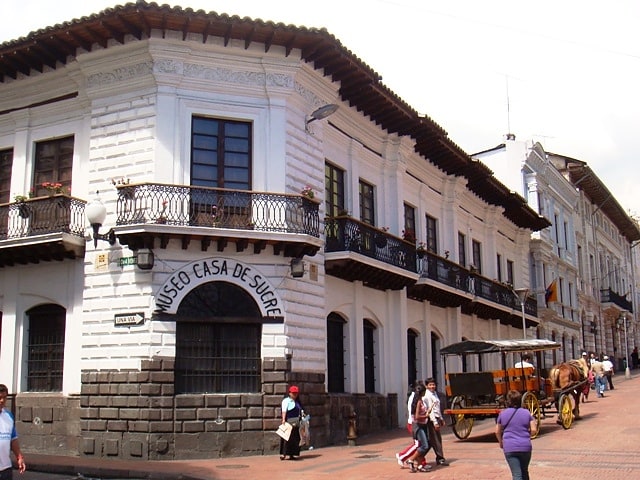
Also known as: Museo Casa de Sucre
Sucre House is a museum in the historic center of Quito, Ecuador. It was established in 1977 by the Ministry of Defence. It is dedicated to the memory of its most famous occupants: the Venezuelan independence hero, Marshal Antonio José de Sucre, and his wife, Mariana Carcelén.
The museum contains the personal belongings of the couple, including the original furniture that was occupied in the different rooms of the mansion, everyday items, and even maps and documents from the time of independence. The ground floor contains many of the weapons and military equipment owned by Sucre, while the second floor contains furniture and rooms as they would have appeared in his time.[18]
Address: Venezuela 573 y Sucre esquina, 170150 Quito (Centro Histórico)
Centro Cultural Metropolitano

Cultural institute in Quito, Ecuador. Centro Cultural Metropolitano is a cultural institution based in Quito, Ecuador. It was established in 1997 in a building which dates to 1622.
This building belongs to the colonial epoch, but its facade was rebuilt in the 20th century with a neo-classic style. The First Central University was in this building. It also was a jail where Spanish authorities executed insurgents during the Ecuadorian War of Independence.[19]
Address: Garcia Moreno N 3-151, 170150 Quito (Centro Histórico)
Municipality of Quito
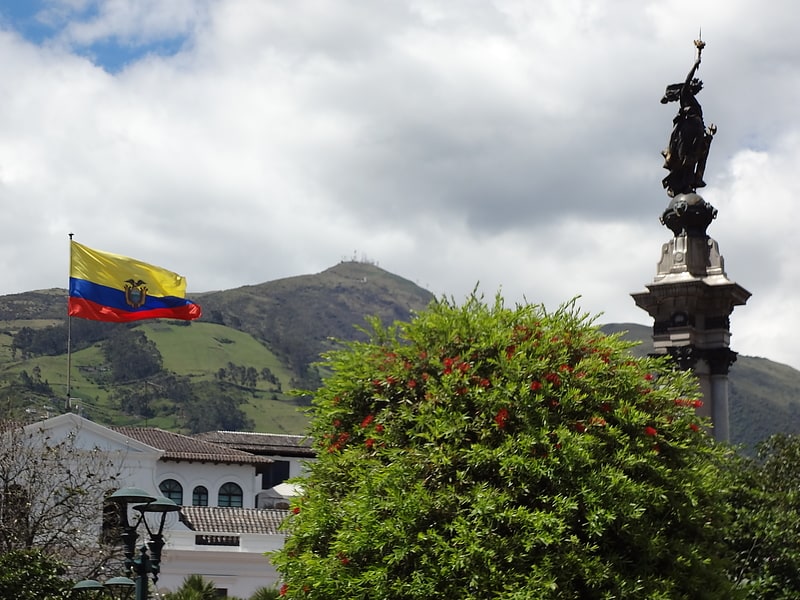
The Municipality of Quito is the governing body of the city of Quito and the Metropolitan District. Its headquarters are at the Municipal Palace, located on the east side of the Plaza de La Independencia[20]